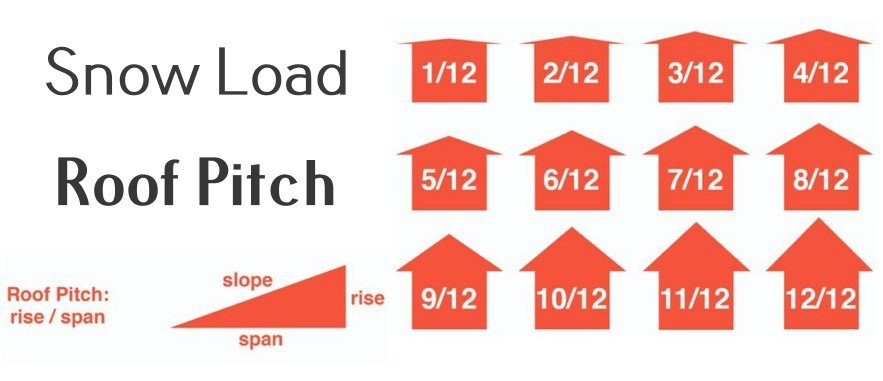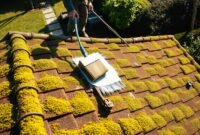In a country with four seasons, some details must be applied to tackle weather problems when it comes to installing roofs. For example, you need to measure snow load roof pitch. Remembering this, you can avoid getting your roof snowload wrecked by something as white as snow.
Snow accumulation in a snowy country is usually measured in inches, but it can vary widely depending on the area. You can find more details below.
What is Snow Load?
Snow load refers to the weight of snow that a roof can safely support. It’s a critical factor in roof design, especially in regions prone to heavy snowfall. The snow load your roof can handle depends on various factors, including roof pitch, material, and local building codes.
Expert Insight: “Snow load calculations must consider both the density of the snow and the area of the roof to ensure accurate assessments.”
Minimum Roof Pitch for Snow
You may not be the perfect guy to build a house, so you have a professional to work for you. However, you have your opinion on what the snow load roof should be on your roof.
An adequate roof slope is critical when it comes to preparing for a snowy day, as the proper slope equals better snow handling your roof can do. This is where a snow load calculator can be particularly useful, helping you determine the right slope based on ground snow loads in your area.
Understanding the relationship between roof pitch and snow accumulation is vital for ensuring the structural integrity of your roof during heavy snowfall. A steeper roof slope tends to shed snow more effectively, reducing the risk of excessive snow accumulation and potential damage.
Therefore, it will ensure the snow isn’t falling surprisingly to the roof sides and isn’t kept there for too long as it may build up and make a mess.

Roof Pitch and Snow Load Capacity
| Roof Pitch (inches per foot) | Snow Load Capacity (psf) | Effective Snow Shedding |
|---|---|---|
| 4/12 | Moderate | Fair |
| 6/12 | High | Good |
| 8/12 | Very High | Excellent |
To prevent sliding snow from accumulating on a roof with a steep slope, it is important to ensure it is properly designed to shed snow off the roof.
Read also: How to Prevent Snow from Sliding Off Metal Roof
So, what are the perfect snow loads on roofs? According to sources, it is ideal to make the pitch more than a 1/12 ratio, yet it should not be as extreme as more than 6/12. Using a snow load calculator can help you determine the ideal pitch based on the ground snow loads specific to your region.
It’s important to balance the roof’s pitch with the expected snow load to ensure safety and durability. A flat roof may hold too much snow, while a steep roof can cause snow to slide off dangerously.
Proper calculation and design can mitigate these risks and ensure a safe, long-lasting roof structure.
Read also: Minimum Pitch for Shingles and Asphalt Shingles
Metal Roof Pitch for Snow
The perfect pitch for a metal roof is just as mentioned earlier. So, you should not make the roof with a pitch lower than 1/12. Yet you should not also make the pitch as more than 6/12 as the snow can endanger you in a way that slides down the roof, damaging the people standing beside it.
Are you wondering how to make your roof safe for the upcoming snow? Well, you got to play it right. You must consider several aspects of making a roof for a 4-season country.
- You need to pick the pitch. As mentioned earlier, you must choose any pitch higher than 1/12 yet lower than or equal to 6/12.
- You will also need to make the design simple. A simple design will help make the snow easily drip off during the snowy day. It is also to help you clean later.
- You need to ensure that the gutters aren’t making you face difficulty cleaning the snow off. Choosing a strong material for the gutters is also important as it acts as an ice dam for your roof.
- You also need to pick the right insulator for your buildings. You need to prepare the insulation so your roof can handle tough winter.
Personal Experience: Preparing for Heavy Snowfall
Living in a region with heavy snowfall, I have firsthand experience in preparing roofs to handle substantial snow loads. Ensuring proper insulation and ventilation can prevent ice dams when melted snow refreezes at the eaves.
Personal Tip: “Regularly clear snow from roof edges and valleys to prevent ice dams and reduce the overall snow load on your roof.”
Read also: How to Put a Ladder on a Sloped Roof Safely?
Understanding snow load and roof pitch is crucial for maintaining the safety and durability of your roof in snowy regions. By incorporating personal experiences and research findings, this guide provides valuable insights into managing snow loads effectively.
Always consult local building codes and consider professional inspections to ensure your roof is up to the challenge.


